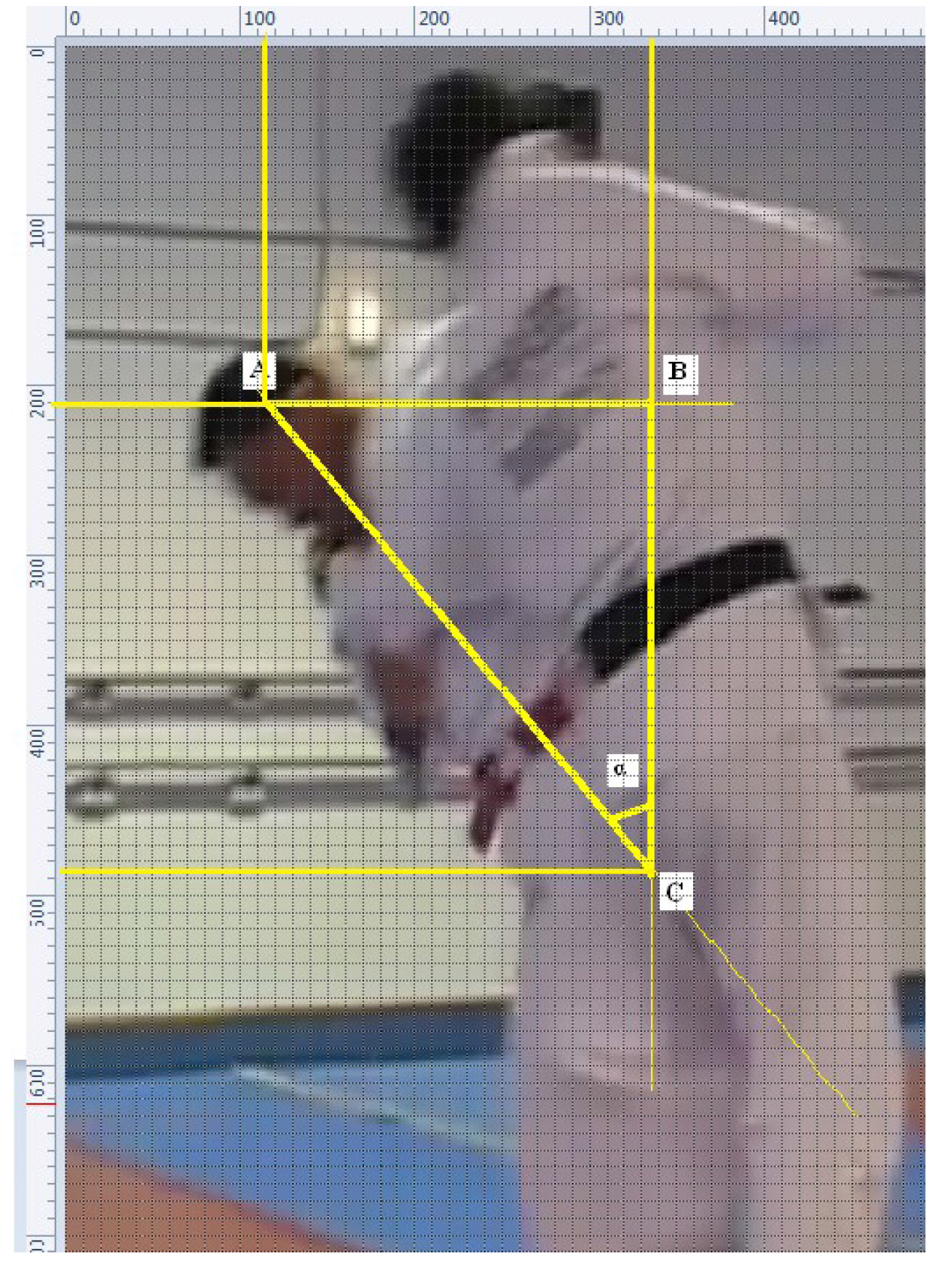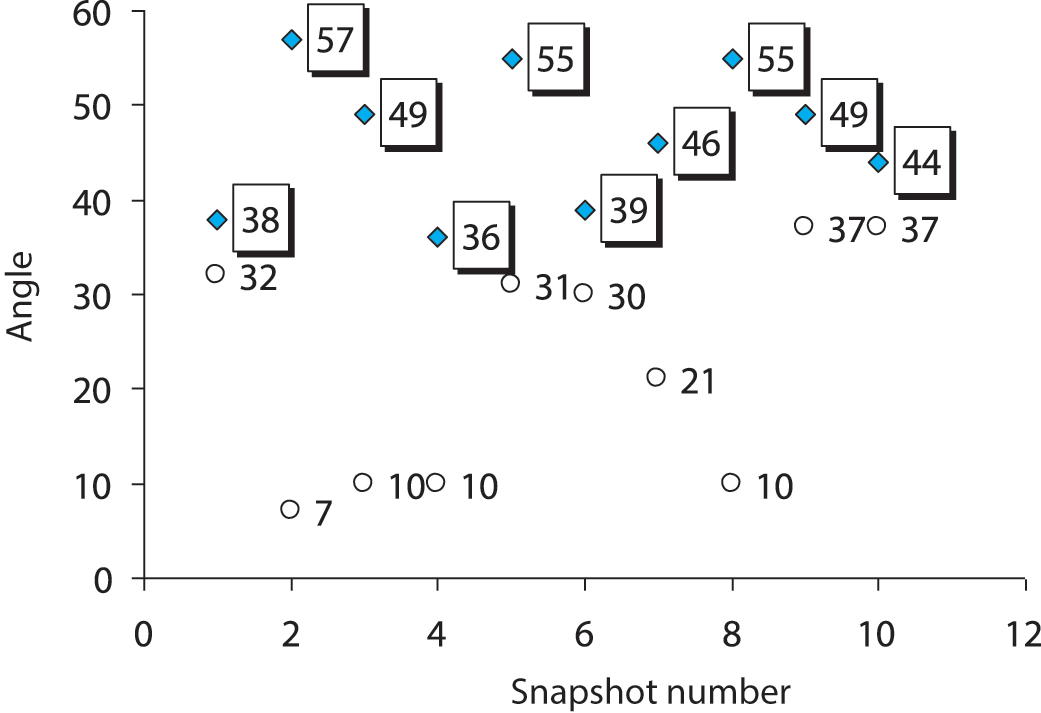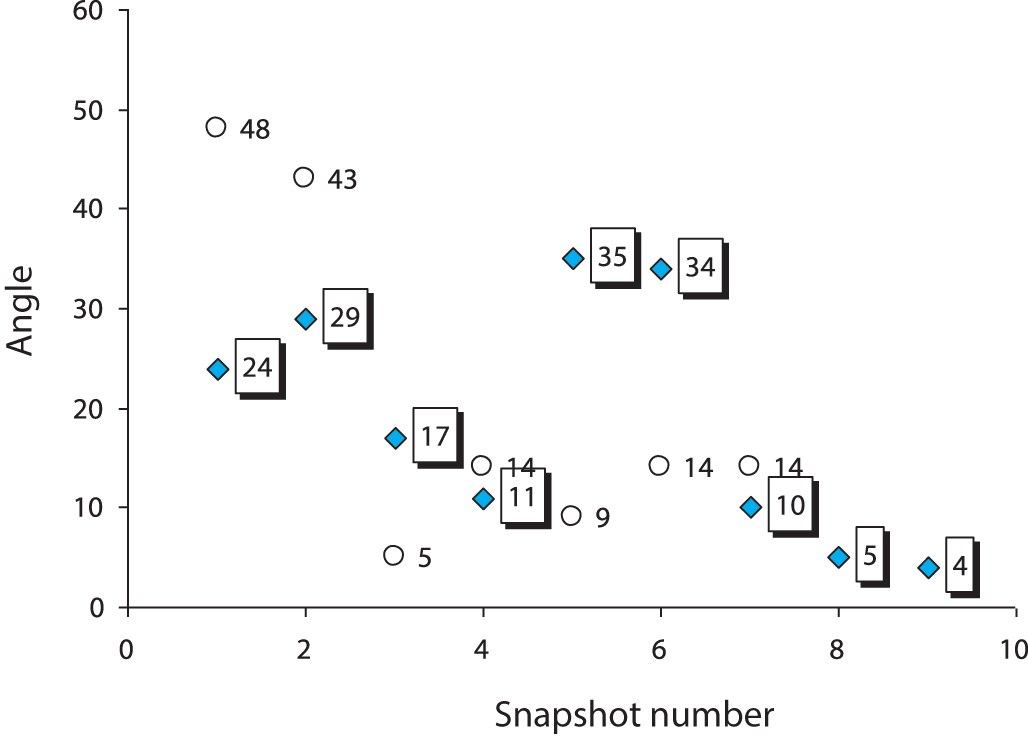Body position control in o-soto-gari throws performed in competitive bouts
Фотографии:
ˑ:
Dr.Hab., Professor A.G. Levitsky1
D.A. Matveyev2
PhD, Associate Professor A.A. Potsipun2
E.Y. Gaponova2
1Lesgaft National State University of Physical Education, Sport and Health, St. Petersburg
2Saint Petersburg State University, St. Petersburg
Keywords: o-soto-gari throw, sambo, judo, combat sports.
Background. In our previous studies we assumed that the o-soto-gari on-the-move throw technique is facilitated in real fights by a higher angle of attacker's trunk bent indicative of the special body centre of gravity (BSG) control skills [1]. This finding may contribute to the efforts to improve the competitive performance efficiency, dependability and effectiveness. Therefore, the above assumption deserves being double-checked and clarified by one more study.
Objective of the study was to analyse and perfect the o-soto-gari throw technique applied in the training process versus that in competitive bouts.
Methods and structure of the study. To obtain basic data for the experiment, we analysed video replays of the top-ranking competitors and exemplary performance records of the o-soto-gari throw technique performed by highly-skilled martial artists available at youtube.com, plus video records of the 18-23 year-old male athletes qualified Class I to CMS. The video records were analysed at the replay rate of 0.25 of the standard one. The snapshots of the opponents’ support foot hooking moments were cut out by Print Screen command and processed by the Paintbrush toolkit. The body control angles were modelled by the straight line followed by the relevant geometric plotting to model opponent’s body positions by a hypotenuse of a right-angled triangle. Ratios of the sides and angles of the right triangle were used to compute the body angle in every snapshot: see Figure 1.
Subject to analysis were the side and frontal views of the throw technique performance sequence. On the whole, 10 competitive and 10 standing throws were analysed in the side views; plus 9 competitive throws and 7 standing throws in frontal views. The angle measurement error was estimated at 50 [1].

Figure 1. O-soto-gari throw technique: trunk bent angle metering diagram [2]
Study results and discussion. Given on Figure 2 hereunder are the results of measurement of angle of trunk bent in side views for the competitive versus standing throw techniques.

Figure 2. O-soto-gari throw: trunk bent angle points for the competitive (♦) versus standing (о) throw techniques in the side views
As demonstrated in Figure 2, the angles of attacker's trunk bent (in real bouts) in the competitive bouts are often higher than those in the standing (training process) throws that may be interpreted as indicative of the special body centre of gravity (BSG) control skills being mobilised in real competitions. The average competitive trunk bent angle in the side views was estimated at 46.80 versus 22.50 for the standing throw sequence, with the difference being rated as significant with р<0.001.
Given on Figure 3 hereunder are trunk bent angle points for the competitive versus standing o-soto-gari throw techniques in the frontal views.

Figure 3. O-soto-gari throw: trunk bent angle points for the competitive (♦) versus standing (о) throw techniques in the frontal views
As demonstrated in Figure 3, the frontal views did not show any significant differences in the angles of trunk bent for the competitive versus standing throw techniques.
Conclusion. It was found that the angles of trunk bent in the competitive throws were significantly higher than those in the training/ standing throws. This regularity may be interpreted as indicative of the increased role of the attacking fighter’s body centre of gravity (BSG) control in a real competitive bout. In this context we offer special sets of exercises that need to be introduced in the education and training process to develop the BSG control skills. The exercises are recommended to be designed on a training-stage- and age-specific basis, with individual sets making a special emphasis on the strength-, speed-, coordination-developing practices or combinations thereof applicable in preparatory/ developing training or body conditioning systems. In addition, such sets of exercises may be used for selection, individual resource and progress rating tests. A special priority in the elite athletes’ training systems will be made on the on-the-move throw techniques versatile in directions and opposing actions. The study data and analyses may be beneficial for the education and training process designs in martial arts and for the coaching staff skill improvement purposes.
References
- Levitskiy A.G., Matveyev D.A., Danilova M.S., Kholodkova O.V. Osobennosti polozheniya korpusa pri broske otkhvatom [Body position in o-soto-gari]. Uchenye zapiski un-ta im. P.F. Lesgafta, 2016, no. 4, pp. 152-155. Available at: http://www.youtube.com/watch?v=6-zFicAVezU
Corresponding author: dmitrijmatveev@yandex.ru
Abstract
The article considers findings of an experiment to clarify and perfect the o-soto-gari throw technique applied in training process versus that in the competitive bouts. To obtain basic data for the experiment, we analysed video replays of the top-ranking competitors and exemplary performance records of the o-soto-gari throw technique performed by highly-skilled martial artists available on youtube.com, plus video records of the 18-23 year-old male athletes, with the video records analysed at the replay rate of 0.25 of the standard one. The snapshots of the opponents’ support foot hooking moments were cut out by Print Screen command and processed by the Paintbrush toolkit. The trunk control angles were modelled by the straight line followed by the relevant geometric plotting to model the opponent’s body positions by a hypotenuse of a right-angled triangle. Ratios of the sides and angles of the right triangle were used to compute the body angle in every snapshot. It was found that the angle of trunk bent in the competitive bouts was significantly higher than in the training bouts with standing throws. This regularity may be interpreted as indicative of the role of the attacking fighter’s body centre of gravity (BSG) control in a real competitive bout. In this context we offer special sets of exercises that need to be introduced in the education and training process to develop the BSG control skills. The study data and analyses may be beneficial for martial artists, coaches and sport researchers active in martial arts.



